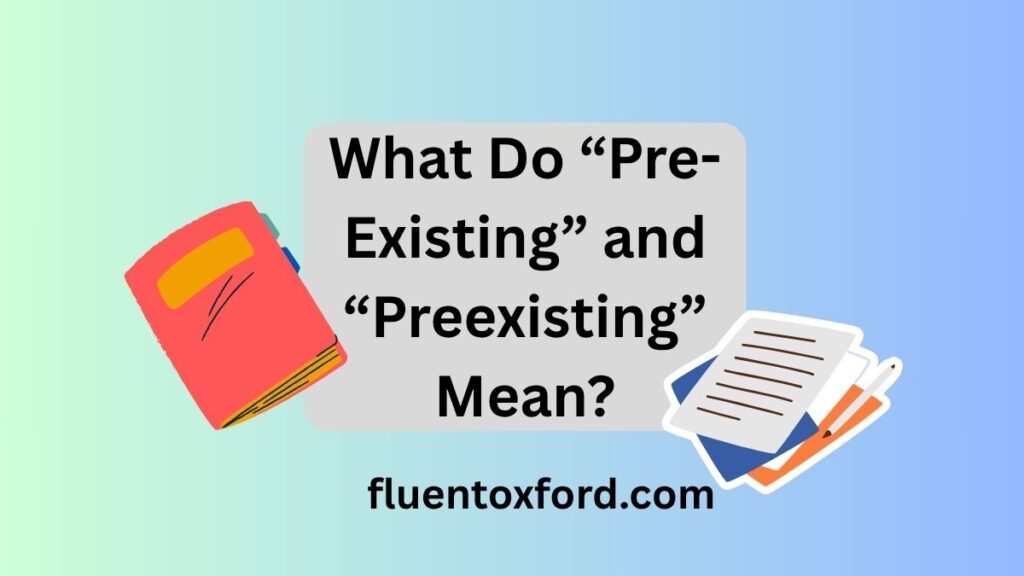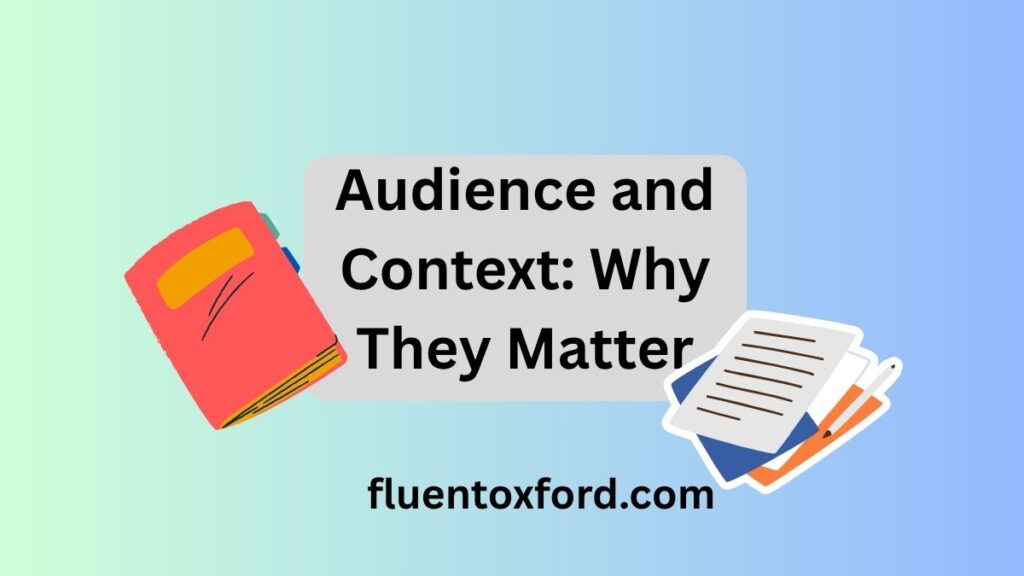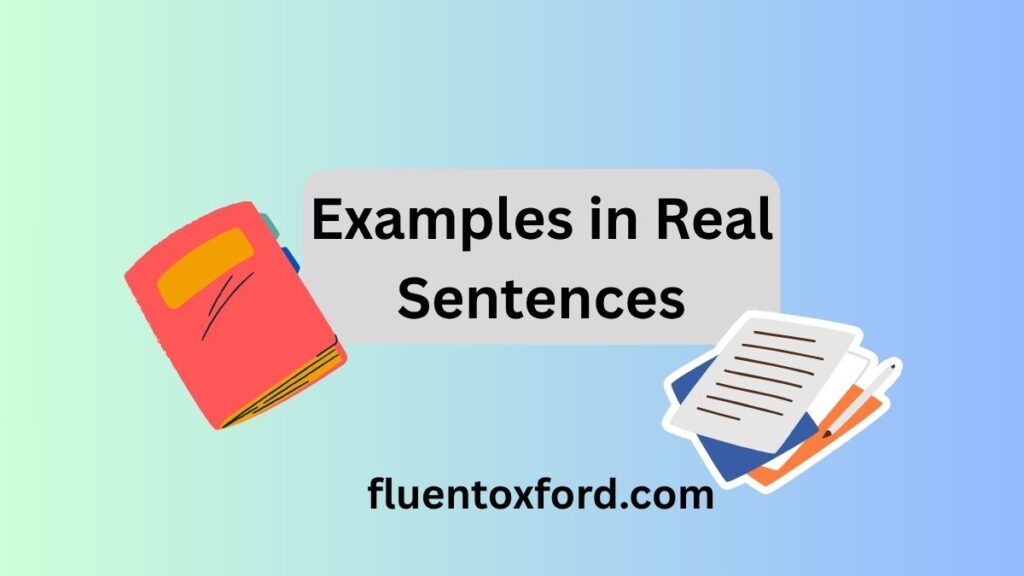The phrase “pre-existing” or “preexistent”: which one refers to the difference in spelling between two forms of the same term. Both versions describe something that already existed before a certain point, often used in contexts like health insurance, contracts, or legal documents. While their meanings are identical, the presence or absence of a hyphen sparks confusion among writers aiming for grammatical accuracy.
Tiny punctuation marks can impact how professional or polished a piece of writing appears. That’s why understanding pre-existing or preexisting—which one is more than a grammar lesson—it’s about presenting information clearly and confidently. A single hyphen can influence how a reader interprets your message, especially in formal documents or content intended for wide audiences.
Grasping the correct usage of “pre-existing” or “preexisting”: which one can help writers follow style guides, maintain consistency, and improve readability. Knowing when to hyphenate shows attention to detail and strengthens your overall writing style.
Pre-Existing vs. Preexisting: What’s the Real Issue?
“Pre-Existing” vs. “Preexisting” highlights the confusion over hyphen usage, affecting clarity, consistency, and adherence to style guide preferences.
At its core, the confusion boils down to this:
Do we need a hyphen in a compound word formed with the prefix “pre-”?
Words with prefixes like pre-, non-, and re- often cause debate. Add a base word like “existing” to the mix, and writers are left wondering:
Should it be one word? Two? Or a hyphenated middle ground?
Why both forms exist:
- “Pre-existing” is the older form, preferred in more traditional and formal contexts.
- “Preexisting” is now widely accepted, especially in journalism, digital media, and even medical writing.
So it’s not about right vs. wrong—it’s about clarity, context, and consistency in writing.
What Do “Pre-Existing” and “Preexisting” Mean?

Both forms carry the same meaning: something that already exists, especially before a specific point in time or event.
Definition:
Preexisting (adj.): Already in existence; existing before a specific time or event.
Common Use Cases:
- Medical: preexisting condition
- Legal: preexisting agreement
- Real estate: preexisting structure
- Software: preexisting bug
This is strictly an adjective. It’s used to describe nouns that already exist.
Which Is Technically Correct: Pre-Existing or Preexisting?
Here’s the good news: Both are correct, depending on the context and the style guide you’re following.
Let’s break it down.
Traditional Grammar:
- Hyphenated compound adjectives used to be standard.
- Hyphens were a way to signal a modifier was made of two parts.
Modern Usage:
- Many compounds evolve over time:
- “To-day” → “today”
- “E-mail” → “email”
- “Pre-existing” → “preexisting”
The trend in modern English leans toward closed compounds—especially when the word is familiar and not confusing.
What Major Style Guides Say
This is where things get clear. Different style guides recommend different forms, so it depends on who you’re writing for.
Here’s how major editorial authorities weigh in:
| Style Guide | Preferred Form | Notes |
| AP Stylebook | Preexisting | Hyphens only when needed for clarity |
| Chicago Manual of Style | Preexisting | Avoid hyphens in common compound adjectives |
| MLA Style | Preexisting | Favors closed compounds unless confusion arises |
| APA Style | Preexisting | Use no hyphen in most prefixes unless ambiguous |
| AMA (Medical Style) | Pre-existing | Keeps hyphen due to medical clarity concerns |
Takeaway: If you’re following a specific guide, use their rules. Otherwise, go with what reads clearly and looks consistent in your writing.
Readability and Clarity: When the Hyphen Helps
Sometimes, even if a hyphen isn’t required, it might help the reader process the sentence more easily.
Use the Hyphen When:
- The word appears in a stacked modifier or awkward phrasing
- You’re writing for a medical or technical audience
- The sentence feels visually or cognitively cluttered
Example with clarity issue:
He was denied due to a preexisting condition.
May be misread as:
“He was denied due to a pre existing condition.”
Better with a hyphen:
He was denied due to a pre-existing condition.
In general, avoid the hyphen only if there’s no risk of misreading.
Audience and Context: Why They Matter

Who you’re writing for determines what version you should use.
In formal writing:
- Follow the guide your institution or publication requires
- Academic and legal work may still prefer hyphenated forms
In informal or digital writing:
- Use “preexisting” to streamline the sentence
- Most blog readers and social media users expect the modern form
Industry-specific norms:
- Healthcare: Pre-existing conditions are still standard in policies and documentation
- Tech and software: Preexisting bugs or preexisting systems is more common
- Publishing/Newsrooms: Preexisting is favored for brevity
Always consider your readers’ expectations.
The History and Etymology of “Preexisting”
To really understand the word, let’s break it apart.
Prefix “Pre-”:
- Comes from Latin “prae,” meaning before
- Commonly used in compound words (e.g., pre-war, prearranged)
Base Word “Existing”:
- From Latin “existere” → “to emerge, appear, be”
Timeline of Usage:
- 19th Century: “Pre-existing” becomes common in formal writing
- Mid 20th Century: Hyphen becomes standard in insurance and medical writing
- 21st Century: Dictionaries list “preexisting” as the primary form
The word’s evolution mirrors trends in English toward more compact forms.
Examples in Real Sentences

With Hyphen (Pre-Existing):
- “The pre-existing contract had to be renegotiated.”
- “Patients with pre-existing conditions are exempt.”
- “Her pre-existing ties to the company caused concerns.”
- The insurance policy does not cover treatment for pre-existing medical conditions.
- Before starting the renovation, they had to deal with several pre-existing structural issues.
- The new agreement respects all pre-existing contracts signed before the merger.
Without Hyphen (Preexisting):
- “The program works with preexisting operating systems.”
- “Preexisting infrastructure saved development time.”
- “He returned to his preexisting role.”
- The software was designed to integrate smoothly with any preexisting system.
- She had a preexisting interest in environmental science before joining the program.
- The court considered the preexisting laws before making a final decision.
Both are acceptable. The key is clarity and consistency.
Synonyms and Alternatives
If you’re not sure about using “preexisting” or want to vary your word choice, here are some strong alternatives:
| Synonym | When to Use |
| Prior | General use in formal or informal writing |
| Former | When describing a role, relationship, or status |
| Previous | Broad and versatile substitute |
| Existing | Drop “pre-” when time reference is already implied |
| Pre-established | Use in legal or contractual language |
| Antecedent | Technical or academic writing |
| Anterior | Rare; mostly in medical or anatomical contexts |
These options help improve lexical variation and maintain reader engagement.
SEO & Web Writing: What’s Better for Search Engines?
SEO matters—especially if you’re blogging or publishing content online. The keyword “preexisting” outperforms the hyphenated version in search volume.
Google Trends Comparison:
| Term | Popularity Score |
| Preexisting | 78 |
| Pre-existing | 43 |
(based on U.S. Google Trends data, past 5 years)
SEO Tips:
- Use both terms strategically to capture broader traffic
- Use “preexisting” in headlines, meta titles, and alt text
- Sprinkle “pre-existing” within the article body for semantic diversity
By using both forms, you increase discoverability while keeping your content natural and helpful.
Real-World Case Study: How One Publication Handles It
The New York Times uses “preexisting” in digital headlines but often switches to “pre-existing” in body text when covering health-related topics.
This dual approach helps them
- Maintain clarity in complex sentences
- Optimize for search engines
- Match style guide standards in health journalism
“It’s not about being right or wrong. It’s about making sure your reader doesn’t have to stop and reread.”
— Lynne Truss, Author of “Eats, Shoots & Leaves”
Conclusion
In the end, the phrase “pre-existing” or “preexisting”: which one shows how small differences in writing can cause confusion. Both forms mean the same thing, but the hyphenated version, pre-existing, is more common in formal writing. Many style guides, like the AP and Chicago Manual, suggest using the hyphen. This helps make the meaning clear, especially when the word comes before a noun.
So, when choosing between “pre-existing” and “preexisting,” which one toPre-Existing or Preexisting: Which One use, it’s best to follow the rules of the style guide you’re using. If you’re unsure, the hyphenated version is usually the safer choice. It looks cleaner and is easier to read. Paying attention to small details like this can make your writing look more professional and polished.
FAQs
1. Which spelling is more commonly used in 2025—”preexisting” or “pre-existing”?
“Preexisting” (without the hyphen) is now more commonly used in digital and general writing, especially following AP and Chicago style guidelines.
2. Is “pre-existing” still acceptable in professional or medical writing?
Yes. Many medical, legal, and insurance documents still prefer “pre-existing” for clarity and tradition.
3. Does Google favor one spelling over the other for SEO in 2025?
Yes. “Preexisting” generates more monthly searches and is the preferred keyword for SEO performance.
4. What do popular dictionaries list as the correct form?
Most modern dictionaries (like Merriam-Webster and Oxford) list “preexisting” as the primary entry, with “pre-existing” as a variant.
5. Should I use both forms in one document?
No. Choose one version (based on your style guide or audience) and stick with it for consistency in writing.

As an admin at Fluent Oxford, Maida Queen is the driving force behind our vibrant learning community. With a deep passion for English language education, she ensures that our platform remains a dynamic, engaging, and supportive space for learners worldwide.
Maida expertly manages content, assists users with their grammar and fluency queries, and fosters an interactive environment where learning feels effortless and enjoyable. Whether you need guidance, motivation, or just a friendly face in the Fluent Oxford community, Maida is always there to help you reach your English language goals.








